As someone who spends a huge chunk of the year chasing Walleye across the Midwest and Canada, I’ve come to trust a handful of go-to techniques. Whether I’m fishing rocky points in Ontario or working deep flats on my home waters in the States, these presentations consistently put fish in the boat for me.
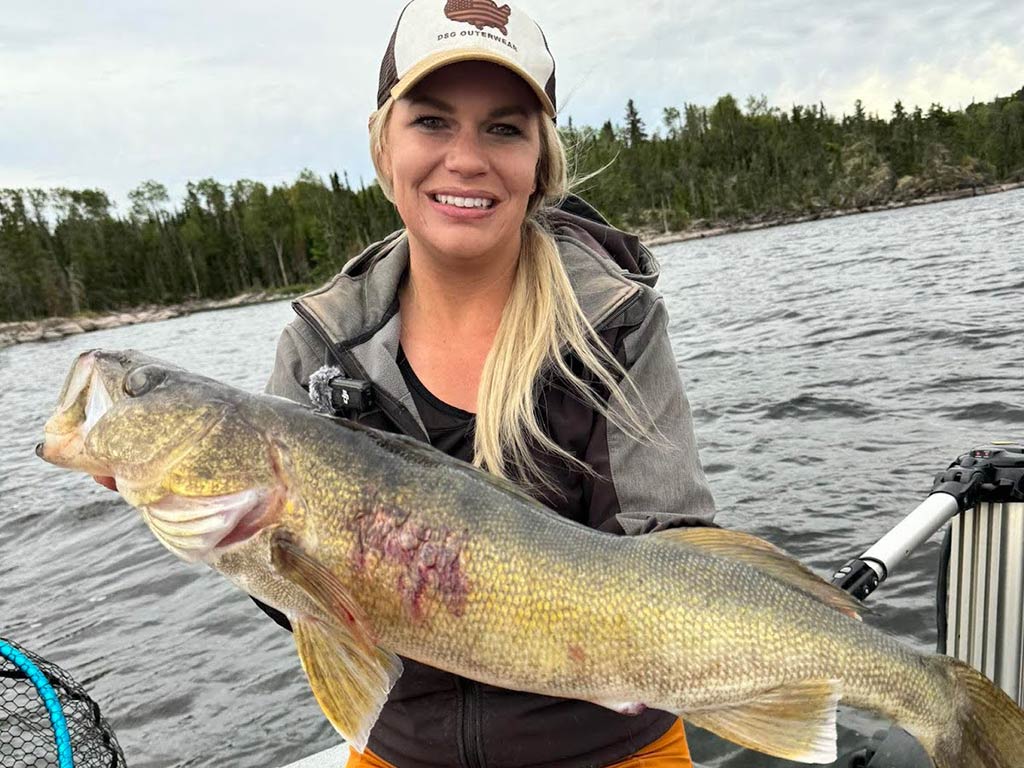
I’m a diehard Walleye angler – completely obsessed – and I’ve spent years dialing in what works this time of year. So today, I want to walk you through my favorite late summer Walleye presentations. Bottom bouncing, vertical jigging, trolling crankbaits, drop shotting, and finally, snap jigging glidebaits (aka jigging raps)… These are the methods I rely on every single summer, and I hope they help you as much as they’ve helped me.
1. Bottom Bouncing: The MVP of Summer Walleye Fishing
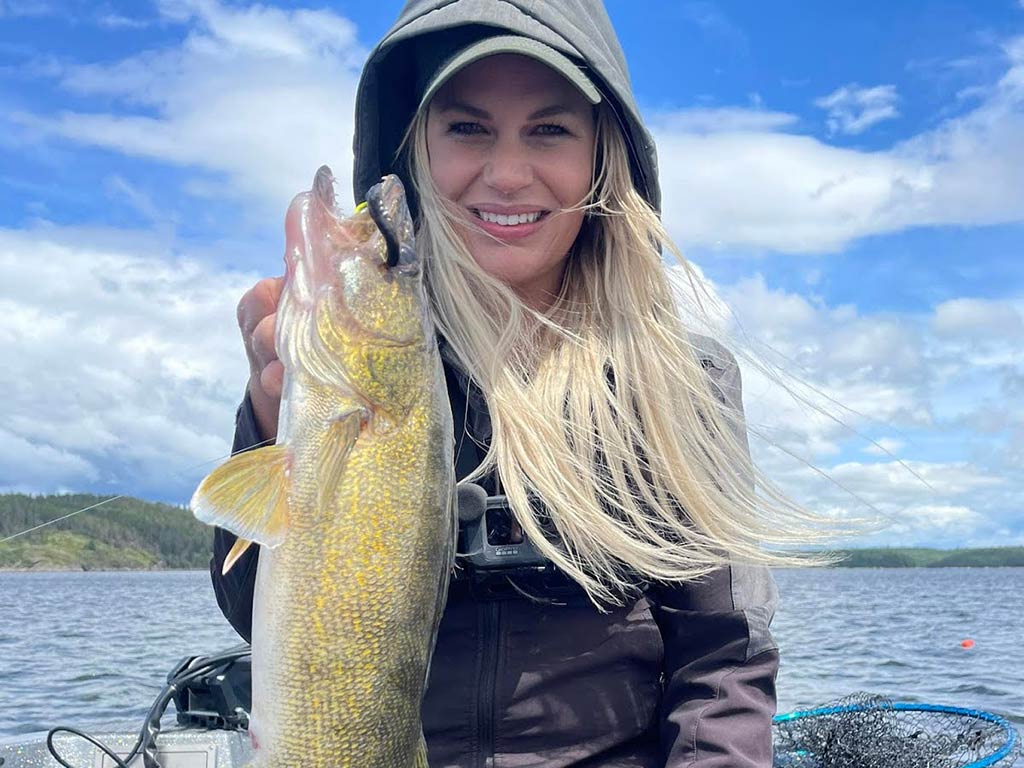
If I had to pick one presentation that’s caught me the most mid-summer Walleye over the years, it would be bottom bouncing. It’s simple, can be used with a variety of technology (or even none), and is a great way to cover ground and catch fish. The key is to target fish along classic breaklines or across mid-lake structure. Here’s my strategy:
I run a bottom bouncer rig with a snell and a spinner blade, usually tipped with a nightcrawler. I’ll troll this setup around 0.8 to 1.5 miles per hour, adjusting based on depth and how the fish respond.
My bottom bouncing tips:
- Use a 1–2-oz bouncer depending on depth/current
- Go with longer snells (4–6 feet) in clear water
- Can work great with leeches, worms, or even plastics
- Don’t be afraid to mix up blade designs and snell length when targeting finicky fish
This rig is absolutely money on nearly any body of water in the summer. It’s easy to do with new anglers as well. If you’re not bottom bouncing throughout the entire summer, you’re missing out!
2. Jig Fishing Summer Walleye: Simple, Effective, and Versatile
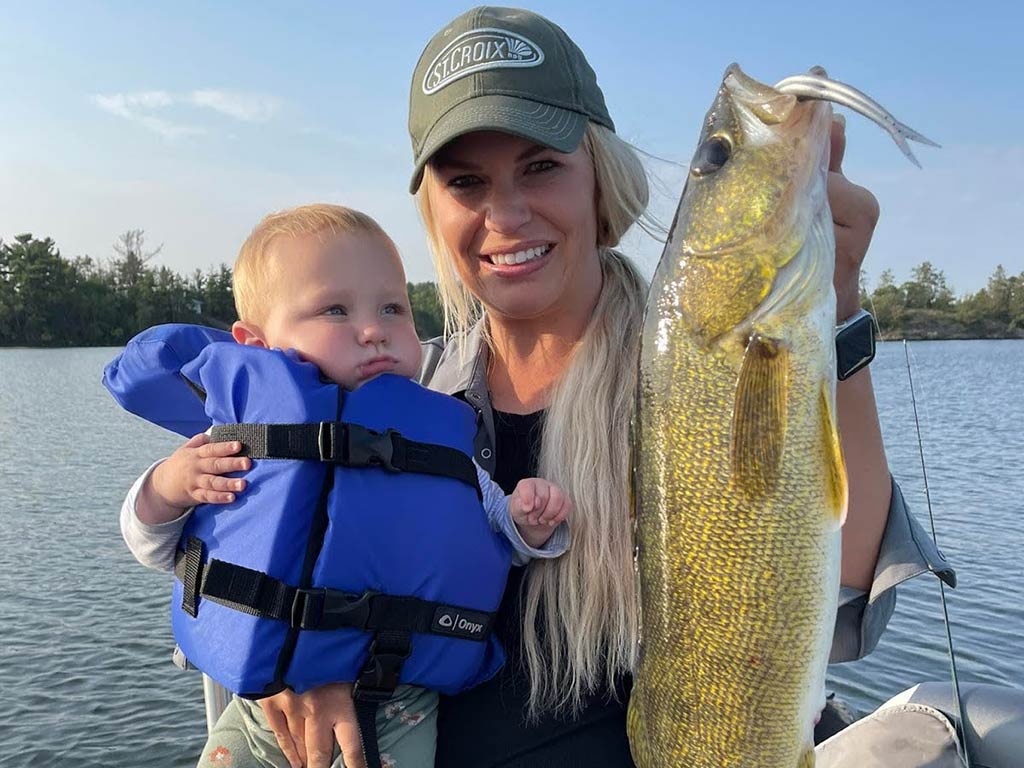
Like most Walleye anglers, I love classic jig fishing. I always have. There’s something about feeling that thump on the end of your line and knowing it’s a Walleye. It’s one of the most versatile techniques in my arsenal, and I use it all spring, summer, and fall. The only changes I make are the depth and the type of bait I put on.
During summer, I’ll jig weedlines or structure and often target points, humps, and drop-offs using heavier jigs and a more vertical approach the deeper I go. When it comes to targeting fish in shallow water, I’ll switch to casting it.
My jig of choice? The Lindy B-Max Livebait Jig, especially when paired with a fathead or leech. This also works great paired with forward-facing sonar technology.
- For sizes, I typically use a 1/8–3/8 oz jig depending on depth
- Drag and pop it on the bottom for reaction bites
- From the end of summer going into mid September, I’ll usually use plastics. However, as the temps start to cool going into the middle of fall, I’ll often switch to livebait – shiners and fatheads, primarily.
When the bite gets tough, slowing down with a jig can absolutely change your day. It’s hands-on fishing, and that’s what I love about it.
3. Trolling Crankbaits: Fast, Fun, and Perfect for Aggressive Fish
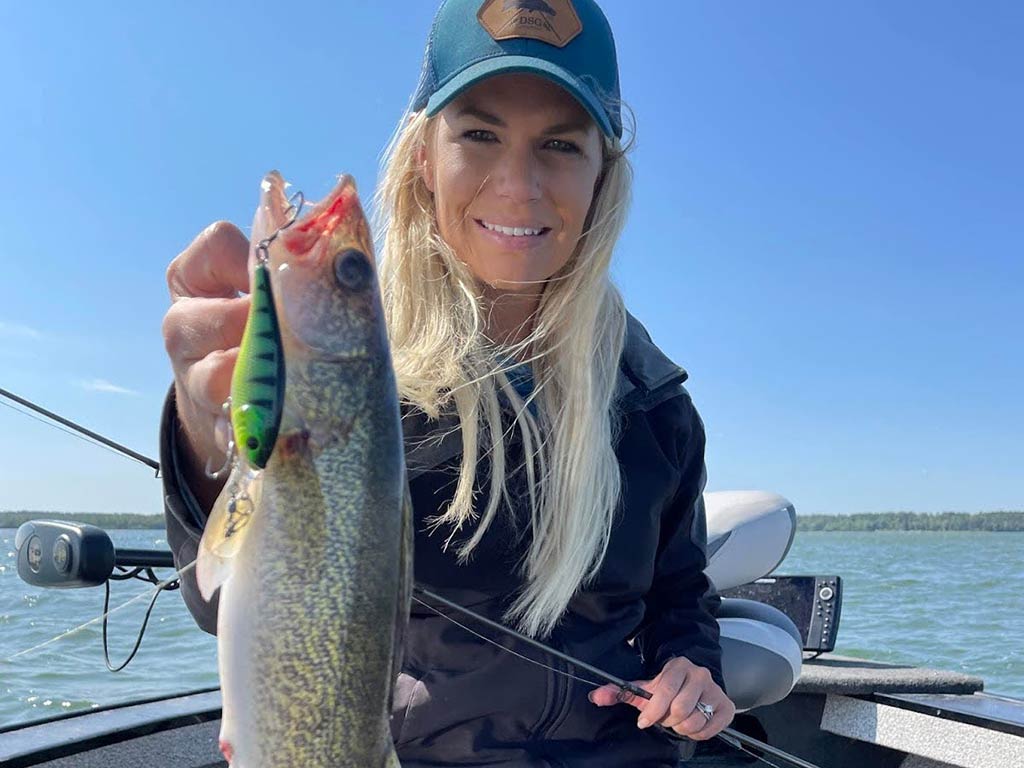
No late summer Walleye fishing is complete without pulling crankbaits. I turn to this technique when I want to cover water fast or when I’m fishing large flats and basin areas where fish are spread out or suspended.
The warmer the water, the deeper the crankbait I will choose. As water cools at the end of summer, particularly September, I’ll switch to shallow-water cranks. When cranking during summer nights, I’ll almost always use a shallow lip crank as fish congregate to feed in the flats.
I grew up fishing this way. It’s easy, requires little in technology investment, and is a great way to introduce young and new anglers to some incredible fishing!
A few tips that have helped me dial in crankbaits:
- Start at 2 miles per hour but don’t be afraid to speed it up to get fish to react
- Watch your electronics for suspended marks and run baits just above them
- Always experiment with line length. Sometimes the best performing line is the one that is at the right depth/length from the boat.
This method really shines in August and early September when Walleyes are roaming and chasing bait.
4. Drop Shotting: Finesse That Fools the Fussiest Fish
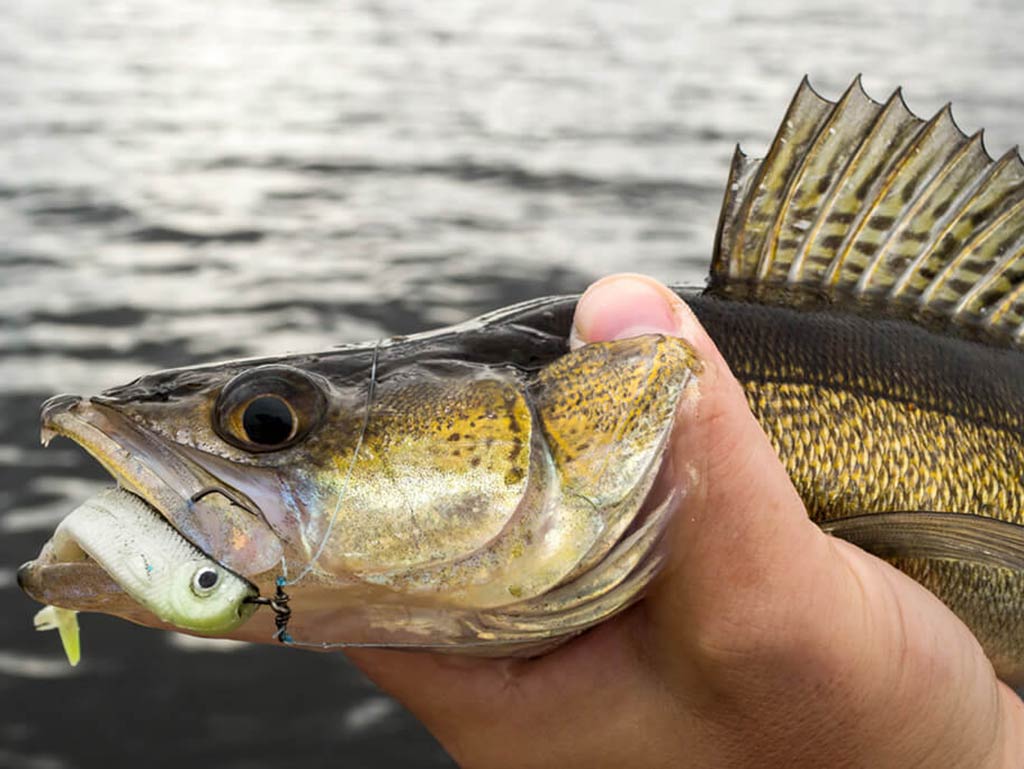
Drop shotting is one of the more “technical” techniques I’ve added to my arsenal in very recent years. It’s popular in Bass fishing, but what many people don’t realize is how incredible it can be when targeting Walleye. I’ve found this especially true on calm, sunny days when the fish are pressured or glued to deep structure. A well-placed drop shot can be the ticket to a finicky bite! This is another method that really shines with forward-facing sonar.
I typically run a short tag (12–18 inches), a nose-hooked minnow or soft plastic, and just enough weight to keep it vertical. I love this approach when I’m fishing clear water or targeting isolated marks on forward-facing sonar.
Drop shot insights from the boat:
- Light line (6–8 lb with a fluorocarbon leader) is key
- Don’t overwork it – less is more
- If you see a fish on sonar, drop right on it and let the bait hover. It’s perfect for those super finicky bites.
This is a super precise, super stealthy way to trigger those moody late summer Walleyes that just won’t commit to anything else.
5. Casting Glidebaits: Aggressive, Efficient, and Highly Addictive
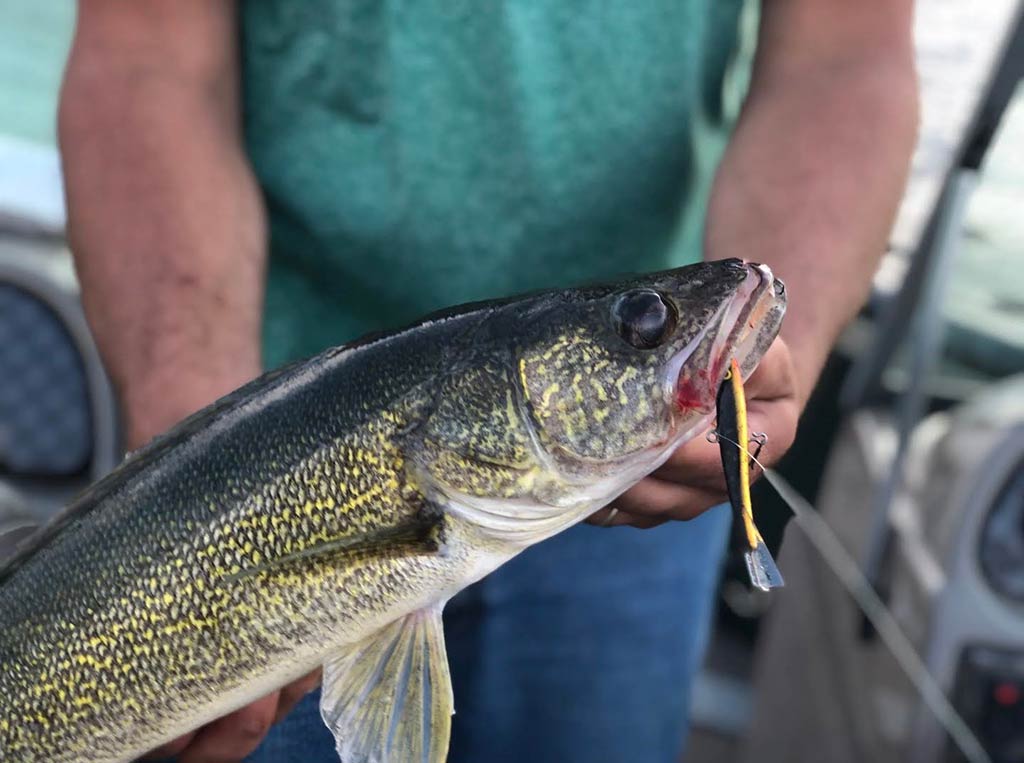
One of the most fun presentations that we pull out at the end of summer is glidebaits (more commonly known as the jigging rap). During peak times, these things flat-out catch fish. I’ve had days where nothing else worked, and snapping a jigging rap got me back in the game fast.
This is a vertical, reaction-based technique that works especially well when fish are pinned to the bottom or stacked on isolated structure. I’ll use a fast-snap-pause cadence and let the bait dart and flutter naturally.
What I’ve learned about jigging raps:
- Use braid with a fluorocarbon leader for sensitivity and solid hooksets
- Pause between snaps and vary your cadence
- Size #7 is my workhorse, but I’ll go smaller or larger depending on depth
It’s an active, fun, and extremely effective way to fish – especially when you can drop it right on a fish using sonar and watch the strike happen in real-time.
Take Advantage of the Late Summer Walleye Rush
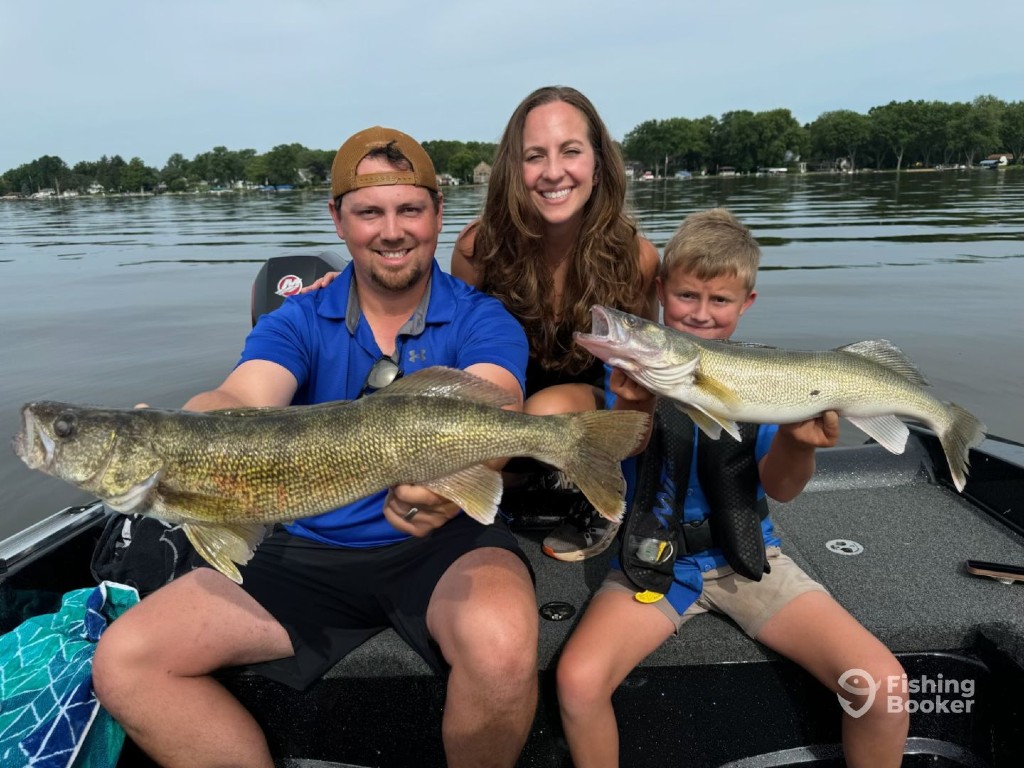
The dog days of summer can have some of the best fishing of the year if you’re prepared for it. At the end of the day, all of these presentations have earned a permanent spot in my boat because they’ve proven themselves every summer. Some days the Walleyes want it slow and subtle. Other days, they want something ripping past their face, igniting a reaction bite. The trick is knowing when to make the switch (and having multiple rods rigged up for easy transitioning).
If you’re fishing the Midwest or heading north into Canada later this summer, give these techniques a shot. I promise, they work!
Are you an avid Walleye angler? What are your favorite summer Walleye tips? Share your thoughts with your fellow anglers in the comments below!
